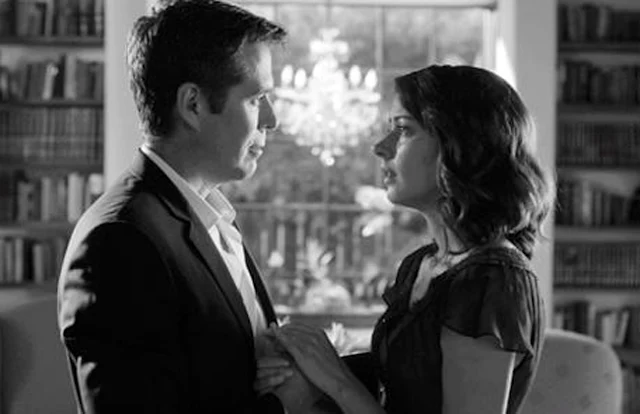 |
| Carloto Cotta in Diamantino |
Diamantino is very much of a moment, that pre-Covid-19 moment before the pandemic shifted the focus off of right wing nationalism, celebrity culture, big-time sports, media manipulation, genetic experimentation, the refugee crisis, globalization, sexual identity, and all of the other obsessions that have receded into the background. The film's co-writer-directors, Gabriel Abrantes and Daniel Schmidt, pile all of these and more into Diamantino, but their film is idiosyncratic enough that Diamantino never bogs down into cause-championing or scattershot satire. After all, any film that centers on a soccer hunk who imagines that he's playing the game with the aid of a stampede of giant puppies is not going to take a wholly predictable course. When the film begins, Diamantino Matamouros (Carloto Cotta) is the world's most acclaimed soccer player, a blissful naïf who is managed by his father (Chico Chapas). But when he misses a penalty kick and loses the World Cup for Portugal, things fall apart. His father dies of a stroke, leaving Diamantino grieving and at the mercy of his wicked twin sisters (Anabela and Margarida Moreira), who send him to therapy with the sinister Dr. Lamborghini (Carla Maciel), who is secretly trying to clone him and create a super-team of Diamantinos. He's also under investigation for money laundering -- where there's wealth there must be wrongdoing, the theory goes -- by two agents named Aisha (Cleo Tavares) and Lucia (Maria Leite), who also happen to be lovers. During a talk show interview, Diamantino recalls how once when out on the Mediterranean in his yacht, he and his father came across a boatload of refugees; tearing up at the memory, he declares his intention to adopt a refugee. This spurs the investigators to have Lucia pose as a nun from a refugee resettlement program and offer up a boy named Rahim for adoption by Diamantino. Rahim is actually Aisha in disguise, which gets her into his house to crack his computer and spy on him. Meanwhile, the wicked sisters have hooked up with a group that wants Portugal to withdraw from the European Union, with the plan to get Diamantino as the celebrity figurehead for the group. He makes a TV commercial for this "Make Portugal Great Again" group that is actually modeled on ads produced by the supporters of Brexit. The rest of the film, of course, is about the way this elaborate setup unravels. Abrantes and Schmidt admit to having been inspired by classic screwball comedy, and the girl-disguised-as-a-boy plot is older than Shakespeare, but Diamantino succeeds on its own merits, which include an anything-goes spirit on the part of the filmmakers. There's so much going on that the film sometimes wobbles and risks falling apart, but it's held together by the altogether charming performance of Cotta as the holy fool Diamantino.








